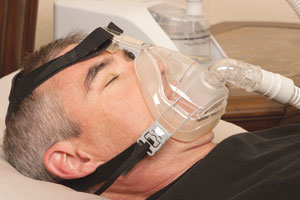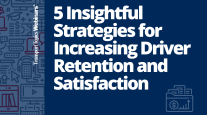Senior Reporter
FMCSA Panels Advance Sleep Apnea Recommendations

After a daylong meeting of sometimes contentious debate, members of FMCSA’s Federal Motor Carrier Advisory Committee and Medical Review Board voted 16-4 to forward their recommendations to the agency.
With few exceptions, the recommendations closely followed MRB’s guidance issued in August that would require medical examiners to refer drivers with a body mass index of 40 or more for a diagnostic sleep study and receive treatment within 90 days if found to have sleep apnea. Drivers would be immediately disqualified and referred for sleep studies if they have experienced excessive fatigue or sleepiness while driving, had been in a sleep-related crash or had been observed asleep while at the wheel.
The committees also recommeded immediate disqualification for drivers who have been observed sleeping while operating a commercial vehicle, and those who have been diagnosed with obstructive sleep apnea but did not comply with prescribed treatment.
The recommendations also called for drivers in many cases to be issued conditional 90-day medical certifications pending a sleep study and treatment, if diagnosed with apnea.
Much of the debate at the meeting centered on whether the two advisory panels should stick to an MRB recommendation that drivers with BMIs of 33 to 39 also be given mandatory sleep tests if they have three of 11 factors that deem a driver to be at great risk for sleep apnea. In a 15-7 vote, the committees voted down a proposal to increase the number of required risk factors to four of 11 before being referred to sleep studies.
The eleven factors are:
- Hypertension (treated or untreated)
- Type 2 diabetes (treated or untreated)
- A male neck size greater than 17 inches or female neck size greater than 15.5 inches
- A history of stroke, coronary artery disease or arrhythmias
- Loud snoring
- Micrognathia or retrognathia (small or recessed jaw)
- Witnessed apnea symptoms
- Hypothyroidism (underactive thyroid; untreated)
- Age 42 or older
- Is male or post-menopausal female
- Mallampati Scale score of class 3 or 4 (small airway)
Those committee members supporting increasing the required number of risk factors to four said the requirements would be more “palatable” for drivers and carriers to accept. Because so many drivers are male and older than 42, those who wanted to increase the risk numbers said a large number of drivers already would have two strikes against them.
The panels also agreed that the use of positive airway pressure devices was the preferred method of treatment, but those who could not adapt to the treatment could be allowed to use oral devices if approved by a sleep expert.
Larry Minor, FMCSA’s associate administrator for policy, said that if the agency does issue a proposed sleep apnea rule, it would not come before next year after a new presidential administration is in place.
The sleep studies are controversial among many drivers because they are costly and can require significant time off the job.
A survey of 800 drivers by the American Transportation Research Institute showed that the average cost of a sleep study was $1,220, due to out-of-pocket expenses and lost time at work.
The board made its recommendations, updated from a 2012 list of recommendations, after discussing a “matrix” of the 77 written comments from physicians and trucking and railroad industry stakeholders regarding the cost, diagnosis, screening and treatment of moderate-to-severe sleep apnea.
The comments were offered in response to a joint FMCSA/Federal Railroad Administration advance notice of proposed rulemaking issued March 8. Neither agency is certain whether an apnea rule will be adopted, but each is exploring the possibility.


